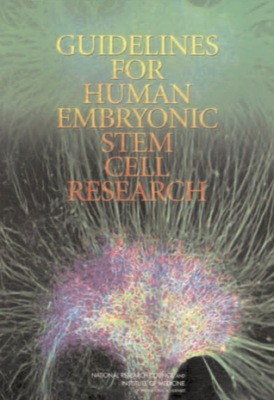 by Patrick Taylor, JD Children's Hospital Boston and Harvard Medical School
by Patrick Taylor, JD Children's Hospital Boston and Harvard Medical School
Dramatic scientific discoveries make big social waves. Polarized ethical debate and messy government regulation often typify this situation. Some debate is grounded in irreconcilable religious differences. But often it is based on misunderstanding the science, or unaddressed fears of runaway consequences. Scientists can help by educating, listening and sharing understanding. But an even bolder step is for scientists, working with other professions and the public, to foster social consensus through dialogue and thoughtful self-regulation. That is the spirit of various guidelines efforts by the US National Academy of Sciences (NAS) and the International Society for Stem Cell Research (ISSCR) addressing stem cell research.
The NAS Guidelines, a national effort within the United States, came first. Building upon accepted procedures for recombinant DNA research, human subject protection, and animal research, the NAS Guidelines called for institutional oversight through multidisciplinary committees including scientists, clinicians, community members, ethicists and legal counsel. These new committees are termed Embryonic Stem Cell Research Oversight Committees or “ESCROs” by the NAS.
The ISSCR led a subsequent, larger effort, putting together scientists, ethicists and counsel from almost every continent, with extensive public comment. Reflecting international diversity, the ISSCR guidelines permit national and regional oversight mechanisms, as well as institutional committees. But whatever the form, there must be rigorous, multidisciplinary, ethical and scientific research standards and oversight.
Oversight bodies exercise responsibility for overall stem cell research compliance with ethical, scientific and legal standards. That entails review of proposed research protocols, as well as systematic oversight of stem cell registries and banks and stem cell research overall.
But under what ethical standards? While absolute consensus on stem cell research is probably impossible, it is actually possible to find common ground on important ethical expectations. Here are some examples: Reproductive cloning – giving birth to a genetic replica — should not be permitted. Women should not be coerced into donating eggs, or paid so much that donation becomes exploitation. IVF clinics should not induce overproduction of eggs. Privacy of donors should be strictly protected. Gamete and embryo donors should be well informed of the nature of embryonic stem cell research. Embryos should not be cultured beyond 14 days, thought to be well before the earliest point at which neural precursors could possibly develop. Clinical personnel with conscientious objections should have the right to decline participating. Research that involves mixing human pluripotent cells into developing animals should be carefully observed, and in some cases prohibited.
Although they are similar, in some respects the ISSCR and NAS guidelines differ: the ISSCR guidelines address more issues and do so with flexibility for global variation. For example, the ISSCR Guidelines explicitly address intellectual property, and encourage sharing materials and data globally to promote an international “science-without-borders.” The ISSCR guidelines include model consent forms and a model agreement for materials transfer among researchers globally. The ISSCR guidelines also reiterate respect for varying local and national laws, reflecting the right of communities to address some ethical and legal issues in diverse ways. Remarkably, however, the hard work of both the NAS and ISSCR task forces led to extraordinary consensus on basic ethical principles which have direct practical impact.
The ISSCR is also about to conclude another important guidelines project - how to assure the ethical translation of stem cell discoveries into therapies. This involves, for example, articulating basic principles of safe manufacture to protect patients from contaminated cells; ethical and scientific standards for how much preliminary knowledge is “enough” before a therapy can be offered to ill patients in a clinical trial; strong condemnation of deceiving desperately ill patients with unproven “cures”, and addressing social justice – the concern that research objectives, oversight, and benefits are just and produce global benefits rather than therapies for a select few.
The guidelines are an important statement that, even where passions run high, common ethical ground can be found through a sincere, deep commitment to ethical scientific research. They also demonstrate how thoughtful, focused guidelines, inclusively developed within an atmosphere of responsible academic freedom, can be much better in promoting ethical science then unilateral regulations affected by politics. Faculty at Harvard and the affiliated hospitals, including HSCI Executive Committee Members George Daley, MD, PhD, and Len Zon, MD of Children’s Hospital Boston, have played a significant part in promoting and developing the guidelines. Dr. Daley was the chairman of the first ISSCR task force and the President of the ISSCR during the second ISSCR task force. Multiple Harvard and affiliated hospital faculty, as well as community members and other professionals, now serve on various ESCROs in the HSCI community, providing ethical and scientific review and oversight. Through their leadership, and the leadership of others in the HSCI community, HSCI scientists have made themselves voluntarily accountable to match pioneering research with highest and best ethical practices.
Patrick Taylor is Deputy General Counsel at Children’s Hospital Boston, and a Lecturer at Harvard Medical School. He has been a member of both ISSCR Task Forces as well as being a member of the ISSCR Ethics and Public Policy Committee, and Co-chair of its Standards Committee.
